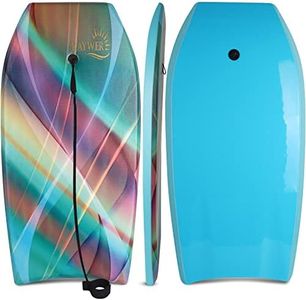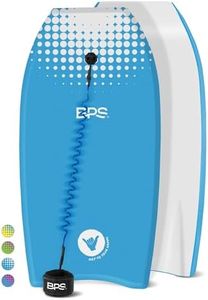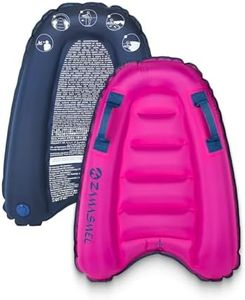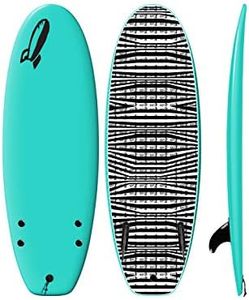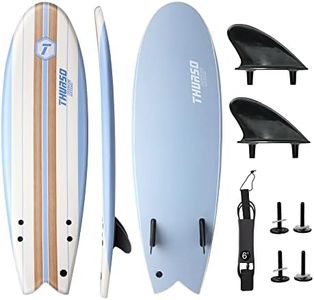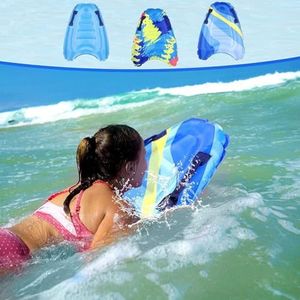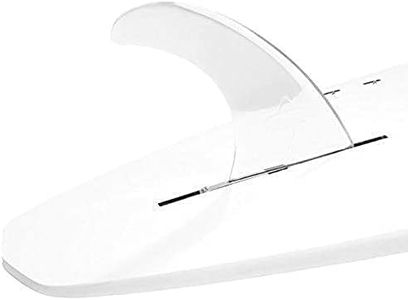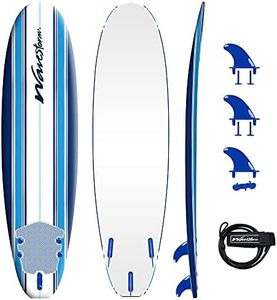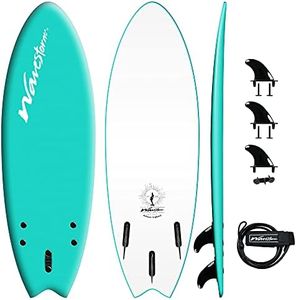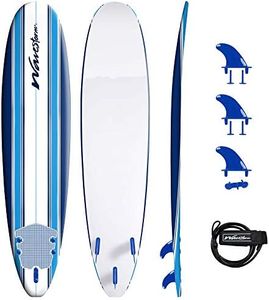We Use CookiesWe use cookies to enhance the security, performance,
functionality and for analytical and promotional activities. By continuing to browse this site you
are agreeing to our privacy policy
10 Best Surfboard For Kids
From leading brands and best sellers available on the web.By clicking on a link to a third party's website, log data is shared with that third party.
Buying Guide for the Best Surfboard For Kids
Choosing the right surfboard for a child is all about ensuring safety, boosting confidence, and making the surfing experience fun and rewarding. When selecting a surfboard for kids, you want something their size, stable in the water, and easy for them to control as they learn. A board that's too big or small, too advanced, or too heavy can quickly sap their enthusiasm or make the learning process frustrating. Understanding the key features of kids’ surfboards will help you make a smart, long-lasting choice that fits the growing needs and skills of your young surfer.LengthThe length of a surfboard is how long it is from nose to tail, usually measured in feet and inches. For kids, the right length ensures the board is easy to carry, paddle, and maneuver. Generally, boards from around 5 to 8 feet suit most young beginners, with younger or smaller kids benefiting from shorter boards (closer to 5-6 feet), while older or bigger kids might do better with boards near 7-8 feet. Consider your child’s height and strength: the board should be long enough to provide stability, but not so long that it’s cumbersome for them to handle both in and out of the water.
WidthWidth refers to how wide the surfboard is at its broadest point. Wider boards offer more stability, making them perfect for beginners who are still mastering their balance. For kids, a board with extra width can help prevent frequent falls and speed up the learning curve. Think about your child's confidence and coordination; if they’re brand new to surfing or a bit hesitant, wider boards (over 20 inches) will make it easier to stand up and ride the waves.
ThicknessThickness means how thick the board is from top to bottom. Thicker boards float better, supporting lighter bodies and making paddling simpler for children. A thicker board is especially helpful for very young or small kids, as it keeps them higher on the water, making it less tiring to catch waves and maintain balance. For most kids, look for a board between 2 to 3 inches thick—lean toward the thicker end if your child is just getting started or is very light.
ShapeThe shape of a surfboard (also called the outline) affects how it performs and turns. Boards made for kids often have a rounded nose and a broad, rounded tail, which help with stability and steering. More pointed noses and sleeker designs are typically for advanced surfers who want speed and maneuverability. If your child is learning, pick a board with a full, rounded shape for consistency and ease in catching waves.
MaterialSurfboards are made from different materials, commonly foam or hard fiberglass. Foam boards, known as 'soft tops,' are the most popular choice for kids because they are lightweight, float well, and are softer (safer in case of wipeouts). Hardboards are usually more performance-oriented—best for experienced, older kids. For beginners, especially for safety and confidence, go with a foam-topped board so your child can comfortably learn the basics.
WeightThe weight of the surfboard impacts how easy it is for your kid to carry and use. Lightweight boards are easier for children to handle, both on shore and in the water, making the whole surfing process a lot more fun and less tiring. To choose the right weight, consider your child’s strength and age. They should be able to carry and maneuver the board on their own without help, as this promotes independence and confidence.
Fin SetupFins on a surfboard help with steering and stability. Beginner boards for kids often come with a single large fin or a three-fin (thruster) setup. Single fins make for smooth, predictable rides, while three fins add a bit more control for turning. For most kids learning the basics, any standard fin setup will work, but make sure the fins are safe, not too sharp, and preferably removable for storage and transport.
